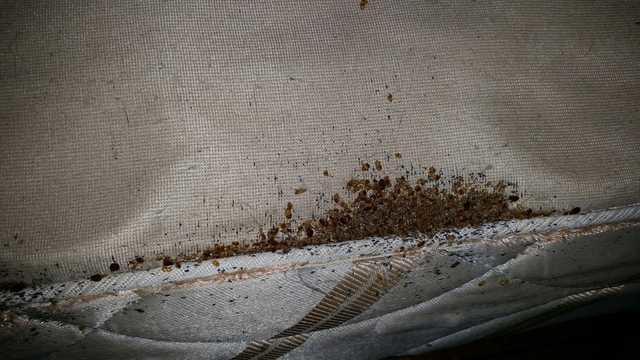Super Bad Bed Bug Infestation in Forked River, NJ
Challenge
Recently, I was sent to a home in , NJ to treat a bed bug infestation. Although bed bugs can become a problem infestation throughout an entire home, we often find the heaviest concentration of these pests in bedrooms. These insects are external parasites that feed exclusively off human blood. When not feeding, they prefer to hide nearby their host. Bedrooms give them a predictable feeding location. Also, bed bugs prefer to feed when the host is resting or fast asleep, so beds are the ideal place for them. It’s no coincidence why these pests are called bed bugs.
Bed bug populations can grow quickly. Even if a single bed bug hitchhikes its way into your home, you can soon find yourself with a large, entrenched infestation. An individual female bed bug can easily lay over 200 eggs in her lifetime. The eggs hatch in less than two weeks and the nymphs reach maturity within five weeks. The newly hatched nymphs immediately start to feed, and they must go through multiple molts on the way to becoming an adult bug. At every molting stage, the nymph requires a blood meal. Adult bed bugs generally feed weekly. No matter how you slice it, if you have a bed bug infestation, you can expect to be bitten every night, and as the infestation grows, so will the number of bites. Sometimes, you don’t even notice the bites. Other times, the bites will leave an itchy welt.
During my inspection of the bedroom, I immediately determined that this homeowner had an exceptionally heavy bed bug infestation. There were enough bed bugs covering the mattress and box spring to sink a battleship! I observed bed bugs in all of the different stages of their development including eggs and all of the nymph stages that these bugs go through before becoming mature breeding adults. Even the accent pillow had several live bed bugs and bed bug eggs in the seams. Bed bug eggs are covered with a sticky glue-like substance so they cannot easily dislodge.
Solution
All observable bed bug activity was thoroughly vacuumed with a high-powered HEPA vacuum. We then treated the mattress, boxspring, and surrounding areas. Finally, we sealed the mattress and box spring. Bed bugs are stealth insects that can even hide in stitching holes. Sealing the bedding is necessary for providing an effective barrier that keeps any bed bugs from leaving from or returning, and goes a long way reducing those early morning feedings before these blood-sucking pests are permanently eliminated.



